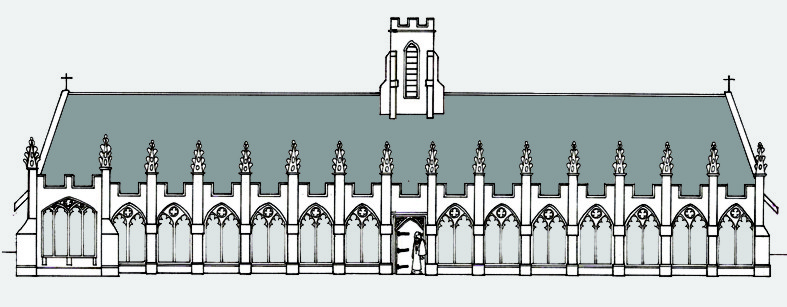
The Grey Franciscan Friars may have come to Bridgwater as early as 1230, but it was in 1245 that Henry III ordered that some Franciscans he was sending should be found a site for a church and permanent buildings. Such a site was found in 1246. The friary, or convent, was soon set up. Building was still proceeding on the dormitory in 1278.
The first documentary evidence for Friarn Street is 1298, and we may presume that the house and grounds of the Friars Minor could be entered from somewhere along it via the gate, porta fratrum minorum . The Friars seem to have occupied only a modest area of ground and did not apparently own property elsewhere (unlike the Hospitalers of St John in Eastover).
It is probable that the Founder did not allow gifts of money to the friars, but this restriction must have been later relaxed as we can read of gifts to the Friars minor varying from 1/8 upwards but not usually more than 20/-. Sir Leonard Hakeluyt left £20 in 1413 to the fabric of the church in which he desired to be buried.. He asked in return that the friars pray for his soul. It was thought that to be buried within the consecrated precincts of a friary added to the security of the soul. In 1435, William, Lord of Botreaux, arranged for the bodies of some of his relatives to be transferred from the church at North Cadbury to the conventual church of the Grey Friars in Bridgwater.
Fr John Somer of the Grey Friars of Bridgwater, and later of Oxford from 1380 was a famous astronomer of that time. He was mentioned by Chaucer. He can be linked to the scientist, Roger Bacon (of Ilchester). He composed a calendar covering the years 1387 -1462, and a brief chronicle of the Bridgwater Convent.
The early church was rebuilt or extended, for rededication with a churchyard, in 1445. This church seems to have been of considerable size: 210ft (64 m) long by 52 ft (16 m) wide (exactly twice as wide as the street elevation of 32 Friarn Street).
The Friary was dissolved without obvious protest in 1538. Memorandum. we the Warden & convent of the Grey Friars of Brygewater with one assent & consent without any manner of coercion or counsell do give our house into the hands of the lord visitor to the kings use desiring his grace to be goode and gracious to us. In witness we subscribe our names with our proper hands the xiij day of September in the xxx year of king henry the viij John Herys warden, Thomas Howett, John Wake, Richard Harris, Gerard Morley, John Cogyn, Andreas Gocit, Robert Oliver.
The inventory at the time of dissolution is displayed adjacent. In 1539, the king received £12 10s for lead £10 for elm and £10 for superfluous buildings associated with the former friary. Little more is heard until in the reign of Elizabeth I, when William Hodson claimed of John Davaige and Ellen, his wife, and William Saunders quiet possession under a lease, of certain messuages and buildings called the Grey Friers held by Friswide Hodson, under a lease from John Saunders, deceased. The Friary church was still standing in the 1642, as the King’s Justices held a trial there (Percy Scholes, The Puritans and Music, 1934, p 240). If the Friary complex lay outwith the town ditch, whatever survived upto the Civil Wars may have been swept away to provide a clear line of fire for the town’s substantial defensive circuit – the West Gate Alms Houses were probably demolished for this purpose.
Neither the site of the large church or of the other buildings of the friary have been located with any certainty.
Dr Peter Cattermole 2007 . Additions TW & MKP August 2020.
